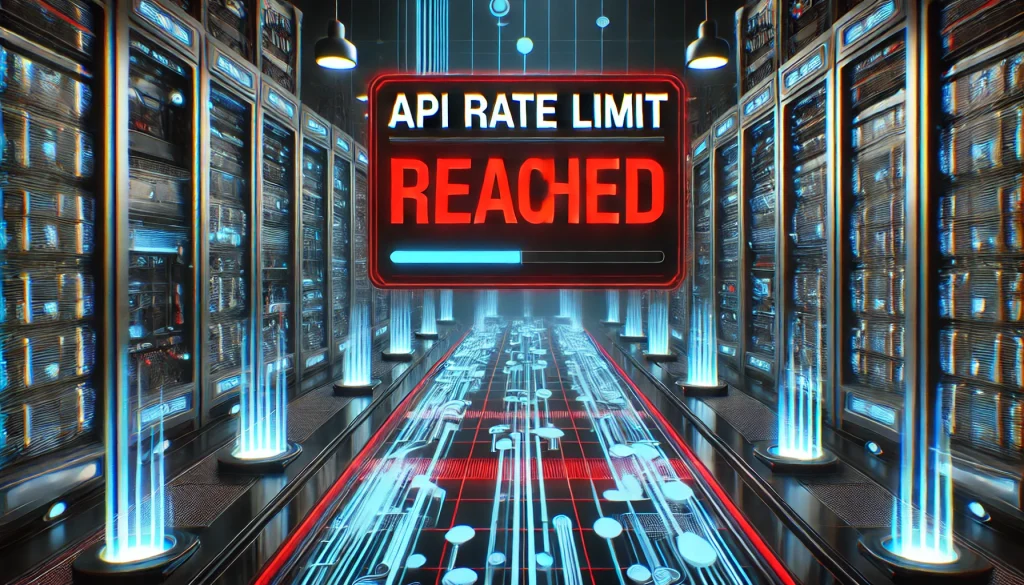
As cryptocurrency grows in the global financial scene, understanding API rate limits becomes crucial for developers, traders, and enthusiasts. As of September 2024, platforms like CoinGecko, Etherscan, and MEXC have updated rate limits to balance server demands with user experience. But what exactly are API rate limits, and why should you care?
Overview
In cryptocurrency, APIs (Application Programming Interfaces) let users interact with platforms like CoinGecko or GitHub for live data, account information, and transactions. However, due to the vast amount of data requested every second, these platforms enforce API rate limits. These restrictions ensure that a single user doesn’t overwhelm the server, affecting others who also need access.
API rate limits can impact anyone using automated tools like trading bots or developers building crypto apps. With the cryptocurrency market continuously evolving, understanding how rate limits work — especially with new updates in September 2024 — is critical to ensure smooth trading and app functionality.
What’s New in September 2024?

In September 2024, several key cryptocurrency platforms rolled out updates to their API rate limits. These changes aim to boost performance while managing increased traffic as more users join the crypto space.
CoinGecko
Introduced stricter rate limits for free users. Previously, users could make 100 API calls per minute, but the limit has now been reduced to 50 calls per minute for unpaid users. This aims to encourage more users to subscribe to their premium plans, which allow for higher call limits.
Etherscan
Known for providing blockchain data, it also updated its rate limits. They now require users to implement API keys for a more controlled flow of requests. The standard limit remains 5 API calls per second, but premium users benefit from up to 25 calls per second.
MEXC and other exchanges
Implemented an updated rate limit system that prioritizes authenticated users, with higher limits for those executing large volumes of trades. Basic users are limited to 120 API requests per minute, while VIP users can make up to 1,000 requests in the same period.
These updates require crypto traders, developers, and businesses using APIs for tracking prices, executing transactions, or pulling data to adjust their systems to avoid interruptions from exceeding rate limits.
Why Are API Rate Limits Important?
API rate limits are crucial for maintaining platform integrity and availability by controlling request frequency. Without them, unlimited API calls could overwhelm servers, causing slower response times or outages, disrupting services worldwide.
Cryptocurrency platforms rely heavily on real-time data to make critical trading decisions. Exceeding API limits could result in lagging data, missed opportunities, or worse, loss of assets during rapid price fluctuations. That’s why rate limits are essential for ensuring a fair and stable ecosystem for all users.
Moreover, API rate limits are vital for security. Limiting API calls lowers the risk of Distributed Denial of Service (DDoS) attacks, where attackers overwhelm servers with excessive requests to shut them down. In this sense, rate limits act as a protective measure against malicious activities.
Impact on Traders and Developers
The September 2024 updates to API rate limits will have a significant impact on traders and developers who depend on automated systems. Here’s how:
| User Type | Impact |
|---|---|
| Traders | Traders using bots may notice that their strategies are interrupted more frequently due to stricter rate limits. This could result in slower trade executions and missed price points. |
| Developers | Developers working on cryptocurrency applications that rely on real-time data will need to adjust their API request logic to comply with new rate limits. This includes throttling requests or implementing caching mechanisms. |
| Businesses | Enterprises pulling large volumes of data for market analysis or blockchain tracking will need to evaluate premium API subscriptions to maintain operational efficiency. |
Automated trading tools relying on APIs for high-frequency trades may become less effective if rate limits are frequently exceeded. Traders will need to upgrade to premium API services or adjust their algorithms to reduce API calls while still collecting the necessary data.
Developers may need to improve error handling and retry mechanisms to manage rejected API requests due to exceeded rate limits. They should also consider using data caching to reduce repeated API calls.
Workarounds and Best Practices

To avoid the disruption caused by API rate limits, there are several workarounds and best practices that traders and developers can implement:
- Monitor Your API Usage: Many platforms like Etherscan and CoinGecko provide dashboards where you can monitor your API call limits in real time. By keeping an eye on your usage, you can avoid unintentionally exceeding the limits.
- Upgrade to Premium Plans: If your use case requires frequent API calls, upgrading to a premium plan with a higher rate limit may be the most efficient solution. For instance, CoinGecko’s premium API plan allows up to 200 calls per minute.
- Use Efficient Coding Practices: Developers can optimize their API requests by batching multiple requests into a single call or by using caching to store data locally, reducing the need for repeated API requests.
- Throttle Requests: Implementing throttling mechanisms can help manage the flow of requests and prevent exceeding the rate limit. Throttling ensures that requests are spread out over time, reducing the risk of overwhelming the server.
Conclusion
Adapting to API rate limits is crucial for anyone in cryptocurrency trading, development, or automation. The September 2024 updates have shifted API usage, especially on platforms like CoinGecko, Etherscan, and MEXC. Traders risk missed opportunities by exceeding limits, while developers must adjust strategies to maintain uninterrupted data flow.
It’s important to monitor the specific rate limits of the APIs you’re using and adjust your strategies accordingly. Upgrading to premium services, optimizing code for efficiency, and implementing throttling mechanisms are all viable solutions to mitigate the impact of stricter rate limits. As the cryptocurrency market continues to grow, staying informed on API changes will remain crucial for success.
FAQ
What happens when an API rate limit is exceeded?
When you exceed an API rate limit, the server typically returns an error message, temporarily blocking further requests until the rate limit resets.
Why do cryptocurrency platforms impose API rate limits?
API rate limits are imposed to prevent server overload, maintain performance, and protect against malicious attacks such as DDoS.
How can I avoid hitting API rate limits in my trading bot?
You can avoid exceeding API rate limits by optimizing your bot’s code, upgrading to a higher API plan, or using a data caching strategy to reduce repeated API calls.
Resources
Bitkan. What Is Rate Limiting in Crypto & Why Is It Important?
Etherscan. API Return Errors
Santiment. Rate Limits
Medium. Understanding MEXC API Limits
Bitkub. What is Rate Limit?
